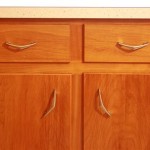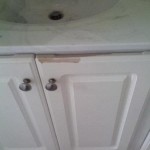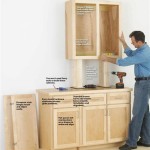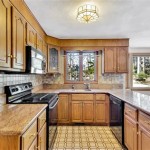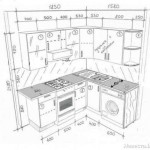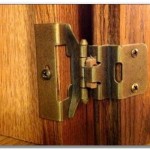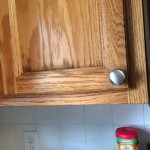Depth Of Upper Kitchen Cabinets: Essential Aspects to Consider
The depth of upper kitchen cabinets is a crucial design element that affects both the aesthetics and functionality of your kitchen. Choosing the right depth for your upper cabinets ensures optimal storage, ease of use, and a visually balanced space.
Standard upper cabinet depths range from 12 to 15 inches. However, selecting the most suitable depth for your kitchen requires careful consideration of several key factors:
1. Cabinet Style and Functionality: The style and functionality of your kitchen cabinets play a significant role in determining the depth. Traditional kitchens often feature deeper upper cabinets, ranging from 13 to 15 inches, to accommodate larger cookware and dishes. Contemporary kitchens, on the other hand, may opt for shallower cabinets, around 12 inches, to create a more streamlined look and maximize counter space.
2. Countertop Thickness: The thickness of your kitchen countertop also influences the depth of the upper cabinets. Standard countertops are typically 1.5 inches thick, but the thickness can vary from 1 inch to 3 inches. If you have a thicker countertop, you may need to opt for deeper cabinets to maintain a proportional balance.
3. Backsplash Height: Backsplashes play an important role in protecting the wall behind your countertops from splashes and stains. If you plan to have a taller backsplash, it may be necessary to have shallower upper cabinets to avoid blocking the view of the backsplash.
4. Ceiling Height and Room Size: High ceilings and large rooms can accommodate deeper upper cabinets without creating a cluttered feeling. However, in smaller or low-ceiling kitchens, shallower cabinets will help maintain a sense of spaciousness and prevent the cabinets from overpowering the space.
5. Storage Needs: The depth of the upper cabinets directly impacts the storage capacity. Deeper cabinets provide more storage space for larger items, such as pots, pans, and dishes. If you have limited storage space, choosing deeper cabinets is a practical solution.
6. Ergonomic Considerations: Upper cabinets that are too deep can make it difficult to reach items in the back of the cabinet, especially for people with shorter heights. Consider your own reach and the ergonomic concerns when selecting the depth of your upper cabinets.
7. Aesthetics and Proportion: The depth of the upper cabinets should complement the overall design of your kitchen. Deeper cabinets can create a more substantial and traditional look, while shallower cabinets contribute to a modern and minimalist aesthetic. Ensure that the depth of your cabinets is visually harmonious with the rest of the kitchen elements.
Choosing the right depth for your upper kitchen cabinets is an important decision that should not be overlooked. By carefully considering the factors discussed, you can create a kitchen that is both functional, stylish, and perfectly suited to your needs.

Icymi Kitchen Cabinet Depth Dimensions Kitchencabinetsdimensions Upper Cabinets Wall

What Is The Standard Depth Of A Kitchen Cabinet Dimensions Cabinets Height Wall Units

Standard Upper Cabinet Height Conventions And Codes Kitchen Cabinets Measurements Sizes

Kitchen Cabinet Sizes What Are Standard Dimensions Of Cabinets

Get More Kitchen Storage With Counter Depth Upper Cabinets

Proper Depth For Frameless Cabinets
Guide To Kitchen Cabinet Sizes And Dimensions

How To Buy Garage Storage Cabinets Step 7 Design A Layout For Your Using Standard Cabinet Dimensions Vault Custom

Get More Kitchen Storage With Counter Depth Upper Cabinets

3 Types Of Kitchen Cabinets Size Dimensions Guide Guilin
Related Posts

